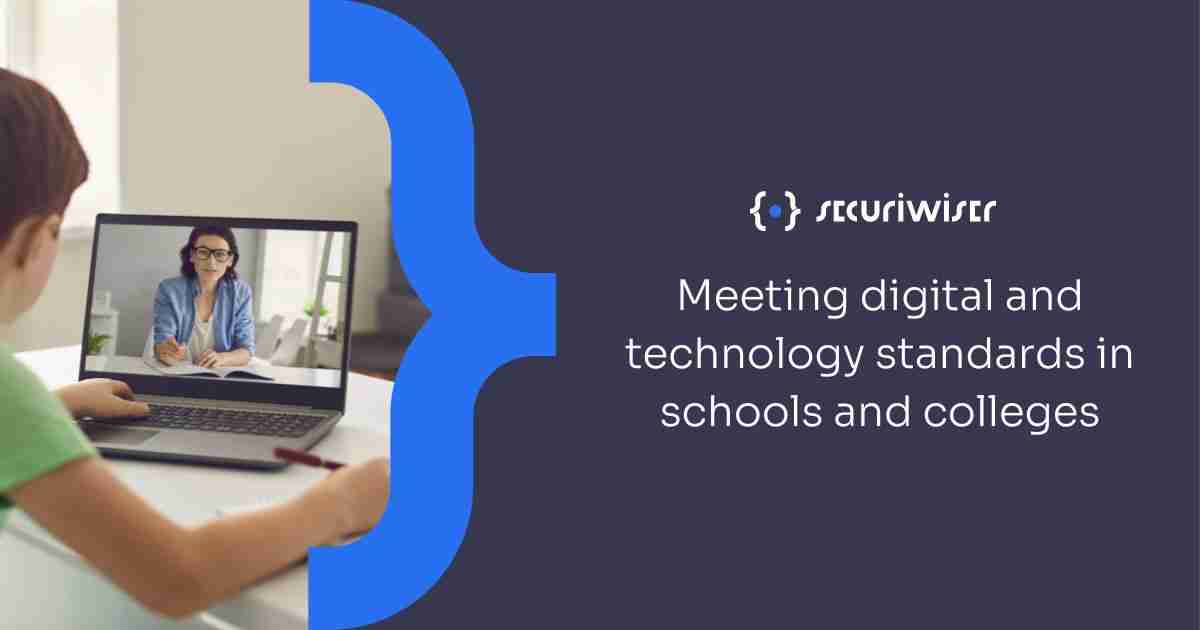Meeting digital and technology standards in schools and colleges
Blog / Meeting digital and technology standards in schools and colleges
3 MIN READ

Introduction
The U.K. Department for Education has established cybersecurity guidelines and standards for schools and colleges to adhere to, safeguarding sensitive student and employee information. They outline technical necessities like configuring firewalls correctly, altering default admin passwords, and updating firmware.
To satisfy the standards, institutions must guarantee user accounts only access the required devices and data. It also stresses the urgency of promptly changing compromised passwords and physically securing network hardware since attackers can exploit onsite devices
Schools must meet the following standards to ensure compliance with these guidelines:
Standards
- Firewall protection for network devices: Firewalls are barriers between internal networks and external threats. By monitoring and controlling incoming and outgoing network traffic based on preset security rules, firewalls help enforce policies that protect schools against malicious activities. They prevent unauthorized access and cyberattacks while safeguarding sensitive data and resources, assisting schools to stay safe.
- Properly configured and documented network devices: Schools can strengthen protections against possible threats by maintaining full awareness and enabling security capabilities across all devices. Keeping features updated is vital for addressing newly found weaknesses. This vigilant device oversight is fundamental for reinforced security.
- Limit account access and use multi-factor authentication: Limiting account access through strict policies helps prevent unlawful logins and possible data leaks. Schools should also require users to provide more sign-in details than passwords when accessing sensitive information for extra protection.
- The use of anti-malware software to protect the network environment: Malicious software like viruses, worms, trojans, and ransomware can infect devices and networks, leading to data theft, system failures, and significant security compromises. Schools can take proactive measures against them by utilizing anti-malware programs to safeguard their sensitive information and operations.
- Verification of downloaded applications: A single unsecured application jeopardizes the safety of an entire network. To minimize security breach risks, IT staff should thoroughly scrutinize all applications for vulnerabilities and guarantee they run the most current security fixes and upgrades. Staying updated secures the network against potential exploits.
- The use of licensed hardware and supported software: Proper licensing guarantees users have legal approval to utilize software and devices, avoiding legal trouble for illicit usage. Schools can dramatically decrease cybersecurity risks by remaining licensed and current with security updates.
- Backing up essential data: Maintaining backup copies of vital data ensures protection against potential data destruction or corruption. There should be at least three data duplicates across at least two kinds of storage media, and one copy should be kept offsite. This multi-layered approach minimizes irrevocable data loss, keeping information available and protected when unforeseen issues occur
- Contingency planning and business continuity: Given the constant and developing risk of cybersecurity attacks, having a robust and frequently evaluated contingency plan is crucial. It helps minimize the impact of any breach and enables the quick resumption of critical functions. An effective plan limits downtime, curbs damages, and sustains community assurance in the school’s capacity to safeguard confidential data.
- Reporting cyber incidents: Cyber attacks that illegally access or harm data are criminal offenses that require investigation to stop the culprits and protect systems. Schools that report these unlawful network breaches can get the assistance they need to minimize the damage and safeguard their infrastructure from additional compromise.
- General Data Protection Regulation compliance: The law requires organizations that collect personal data to conduct a Data Protection Impact Assessment, pinpointing potential hazards in processing that information and mitigating risks immediately. Schools must take this vital step to protect their students’ and staff’s data, uphold their reputation, and steer clear of legal consequences.
- Staff cybersecurity training: Providing staff with fundamental cybersecurity training gives them the awareness to spot and react to possible dangers, stopping sensitive information and school IT systems from being harmed. With this knowledge, employees can proactively flag and report weak points in security, contributing to the overall resilience of the school’s information technology network.
Conclusion
Though these standards may evolve over time, it is vital to stress their importance for schools and colleges. By aligning with and meeting these pivotal benchmarks, academic institutions reinforce their ability to safeguard sensitive information and counter cyberattacks. Compliance empowers them with critical data protection.
Register for a free demo account to discover how Securiwiser can assist you in complying with the DfE digital and technology standards.
How secure is
your school?
Blog categories
How secure is
your school?